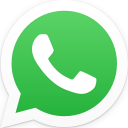FAQ's
- our faqs
Learn more from FAQs
• On-Page SEO (content optimization, title tags, internal linking).
• Technical SEO (speed, mobile optimization, schema markup).
• Off-Page SEO (backlink building, authority building).
• Local SEO (Google Business Profile optimization, location targeting).
• E-commerce SEO (product pages, category optimization).
• Content SEO (blogs, landing pages).
• Google Analytics & Search Console (tracking & indexing).
• SEMrush & Ahrefs (keyword research, backlink analysis).
• Screaming Frog (technical SEO audits).
• Yoast/RankMath (on-page optimization).
• Surfer SEO / Clearscope (content optimization).
These tools help us deliver data-backed, measurable results.
• Keyword ranking improvements.
• Organic traffic growth.
• Bounce rate & session duration.
• Conversion rate & lead generation.
• Domain authority and backlink growth.
Clients receive monthly reports with clear progress and actionable insights.
E-commerce marketing focuses on generating sales for online stores using SEO, PPC, email, and retargeting. Unlike general marketing, it optimizes product listings, checkout flows, and user experience for conversions.
We specialize in Shopify, WooCommerce, Magento, Wix, and custom-built platforms. Our campaigns are tailored to your store’s ecosystem.
We use retargeting ads, exit-intent popups, simplified checkout processes, and abandoned cart email automation to bring customers back.
Yes, we optimize product feeds, run Google Shopping Ads, and track ROI to maximize sales.
By optimizing product descriptions, images, reviews, CTAs, and adding urgency (limited-time offers, low stock alerts).
E-commerce SEO improves rankings for product and category pages, making it easier for shoppers to find you. This drives free, high-intent traffic.
Yes! We design festive promotions with creatives, offers, and ad campaigns to capture holiday shoppers.
Absolutely. Influencers build trust and drive traffic with product reviews and unboxings, boosting conversions.
We track revenue, conversion rate, average order value (AOV), cart abandonment rate, and ROAS.
Yes, we create hybrid strategies combining your website and Amazon/Flipkart stores for maximum reach.
 Skip to content
Skip to content